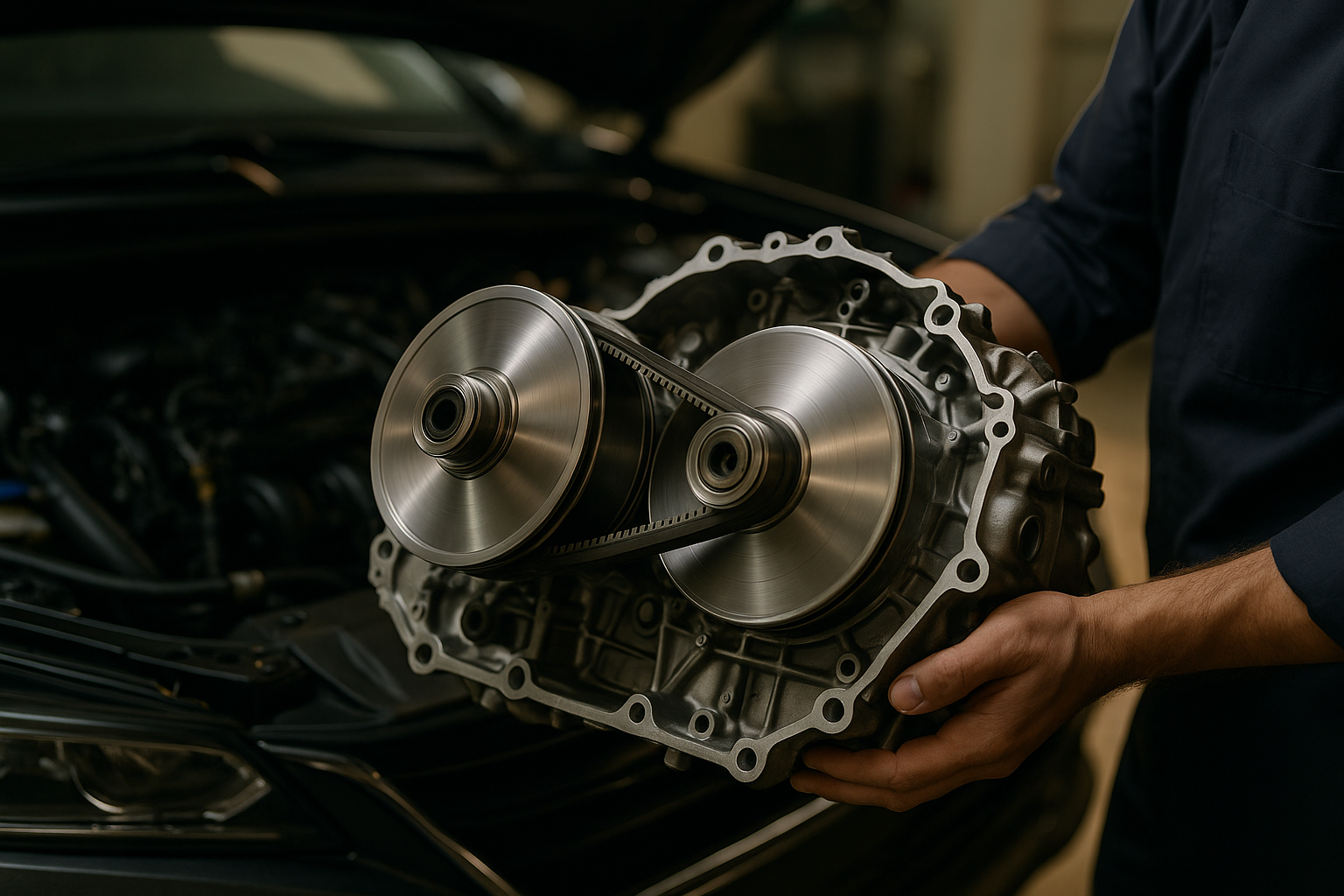Unveiling the Magic of Continuously Variable Transmissions (CVT)
Every now and then, a technology emerges in the automotive world that shifts the paradigm of how we understand cars and driving. One such technology is the Continuously Variable Transmission (CVT). Although CVT isn't a novelty, it has been gaining increasing traction in recent years due to its unique characteristics that differentiate it from traditional automatic and manual transmissions. This article delves into the fascinating world of CVTs, their history, working principles, and their impact on the automotive industry.

The Dawn of CVTs
In the early 15th century, Leonardo da Vinci sketched a continuously variable transmission, marking the first recorded concept of this revolutionary technology. However, it wasn’t until the late 19th century that a practical CVT was developed. The DAF, a Dutch car manufacturer, introduced the CVT in their small cars in the 1950s. The adoption of CVTs by other manufacturers was slow, but in the last two decades, CVTs have found their place in many vehicles, particularly hybrids and smaller cars.
The Intricacies of CVTs
Unlike traditional transmissions that have a set number of gears, CVTs have an infinite number of ratios, providing smooth and efficient performance. The system includes a pair of pulleys connected by a belt, with one pulley connected to the engine and the other to the wheels. The diameter of these pulleys can change, creating different gear ratios. This seamless shifting of gear ratios sets CVTs apart from traditional transmissions, minimizing the jerk or pause usually felt during gear shifts.
The CVT Wave in the Auto Industry
The use of CVTs has become increasingly common in modern vehicles due to their efficiency and the smooth driving experience they provide. Many manufacturers are incorporating CVTs in their vehicles, particularly in models designed for fuel efficiency. According to industry reports, the global CVT market is expected to grow significantly in the next few years.
The Appeal and Challenges of CVTs
CVTs provide a smooth and efficient driving experience, making them ideal for city driving. Their infinite gear ratios can optimize engine performance, improving fuel efficiency. However, the technology isn’t without its drawbacks. Some drivers find the driving experience with CVTs less engaging compared to manual transmissions. The technology has also faced reliability issues in the past. However, with advancements in technology and materials, these issues have been significantly reduced.
The Future of CVTs
As automotive manufacturers continue to seek ways to improve fuel efficiency and performance, the use of CVTs is likely to increase. With advancements in technology, it’s possible we will see CVTs overcoming their current limitations and becoming a common feature in a wider range of vehicles.
CVTs are a fascinating piece of automotive technology. They represent a different way of thinking about transmissions, one that prioritizes smoothness and efficiency. As technology continues to evolve, the CVT is a testament to the automotive industry’s constant quest for innovation and improvement. This unique transmission technology is reshaping our driving experiences, and it will be exciting to see how it continues to evolve in the years to come.






